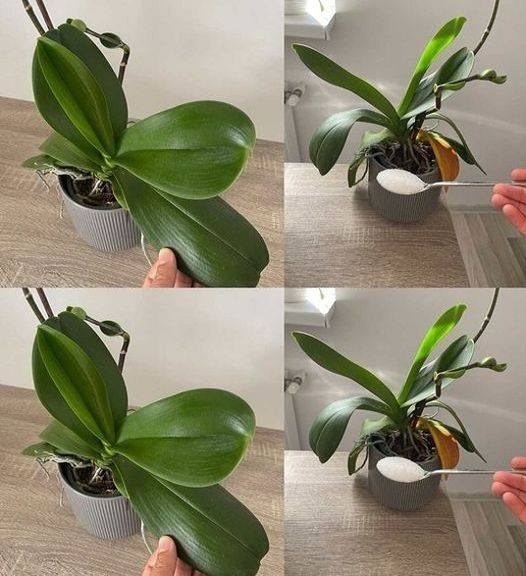ADVERTISEMENT
#### **1. Liquid Fertilizers**
Liquid fertilizers, like the one we’re discussing in this article, are the most popular and efficient choice for orchids. They are easy to mix and apply, providing immediate nutrients to the plant. Liquid fertilizers can be absorbed quickly by the orchid’s roots, promoting healthy growth and frequent blooming.
Advantages:
– Quick absorption by the plant.
– Allows for easy control of nutrient levels.
– Customizable application (you can dilute the solution to the strength you desire).
Disadvantages:
– Must be applied regularly, typically every week during the growing season.
– Can be more expensive than other options.
#### **2. Slow-Release Fertilizers**
Slow-release fertilizers are another option for orchid care. These fertilizers are typically granular and release nutrients gradually over time. They are convenient for people who don’t want to worry about fertilizing frequently.
Advantages:
– Convenient—only needs to be applied once every few months.
– Consistent nutrient release over time.
Disadvantages:
– Slow nutrient uptake, which means the orchid might not respond as quickly to changes in feeding.
– Can be difficult to control the nutrient strength.
### **Other Orchid Care Tips for Maximum Blooming**
Fertilization is just one part of the equation when it comes to keeping your orchids blooming non-stop. There are several other factors to consider that can help your orchids thrive.
#### **1. Light**
Orchids thrive in bright, indirect light. Too little light can prevent the plant from blooming, while too much direct sunlight can scorch the leaves. Make sure your orchid is placed in a spot where it receives plenty of filtered light.
#### **2. Temperature and Humidity**
Orchids generally prefer warm temperatures and high humidity. Keep your orchid in a room where the temperature stays between **60-80°F (15-27°C)**. You can increase humidity by placing a humidifier near your orchid or placing a tray of water and pebbles near the plant.
#### **3. Watering**
Orchids should not be overwatered. Water them once a week or when the top inch of the soil feels dry to the touch. Use room-temperature water and avoid allowing the plant to sit in standing water, as this can lead to root rot.
#### **4. Repotting**
Orchids need to be repotted every 1-2 years to ensure their roots have enough space to grow. When repotting, use an orchid-specific potting mix that drains well and allows air to circulate around the roots.
—
### **Conclusion: A Simple Trick for Non-Stop Orchids**
With just **1 tablespoon** of high-quality fertilizer and a little bit of attention, your orchids can bloom consistently, adding beauty and vibrancy to your home year-round. By providing the right nutrients, maintaining the proper care routines, and giving your orchids the right environment, you’ll be amazed at how easy it is to keep them blooming non-stop.
Orchids can sometimes seem like high-maintenance plants, but with the right fertilizer and a bit of care, they can reward you with stunning flowers again and again. Whether you’re a seasoned orchid enthusiast or a beginner, this simple yet powerful trick will help you cultivate beautiful, healthy orchids that will bloom for months to come.
So, go ahead—give your orchids the boost they need with just **1 tablespoon** of fertilizer, and watch them thrive and bloom like never before!
